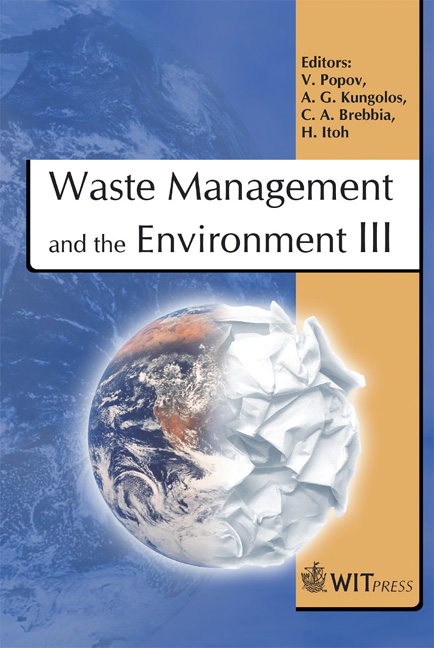Health Risk Assessment For Sewage Sludge Applied To Land In France
Price
Free (open access)
Transaction
Volume
92
Pages
10
Published
2006
Size
369 kb
Paper DOI
10.2495/WM060551
Copyright
WIT Press
Author(s)
L. Déléry, G. Gay, S. Denys, H. Brunet, I. Déportes, A. Cauchi & M. Aupetitgendre
Abstract
Chemical and microbial health risks associated with the application of municipal and industrial sewage sludge to agricultural land were addressed in order to set guidelines within the French legislative context. The chemical part was a quantitative risk assessment study based on the simplified source-pathway-receptor event tree approach. The selected chemicals were those quoted in the French legislation. Several receptors were considered: population consuming vegetables and meat impacted by the sludge application, nearby populations also walking close to fields receiving sludge, farmers plowing such fields, and future residents consuming their own vegetables on former fields. The assumptions and the uncertainties of the approach were discussed. The first quantitative results led to acceptable risk levels, and allowed one to identify the major exposure pathways. The microbial part was a feasibility study based on a literature review. In spite of many uncertainties, a preliminary quantitative risk assessment case study for Enterovirus, Salmonella, E. coli O157 :H7 and Cryptosporidium parvum was developed in order to identify the critical points of the process and to judge its relevance within the national context. Uncertainties of the quantitative risk approach were discussed in detail and led to the proposal of qualitative guidelines based on an event tree, due to the current state of knowledge. Keywords: sewage sludge, chemical and microbial health risk assessment, France.
Keywords
sewage sludge, chemical and microbial health risk assessment, France.





